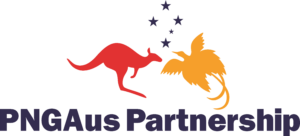|
|
|
Type
Themes
Regions/Countries
Year
Language
Arua, Stanley; Gondo, Robert; Kinau, Adrian; Kotto, Aaron; Dorosh, Paul; Schmidt, Emily; Tian, Junyan. 2024
Schmidt, Emily; Schweta, Yadav. 2024
Diao, Xinshen; Dorosh, Paul A.; Escalante, Luis Enrique; Pradesha, Angga; Junyan, Tian. 2024
Fang, Peixun; Gimiseve, Harry; Mukerjee, Rishabh; Schmidt, Emily; Zhang, Xiaobo. 2024
This paper explores the unique challenges and opportunities within PNG’s poultry sector using a "growth diagnostic" approach (pioneered by Rodrik, 2010). Through interviews with key stakeholders across the poultry value chain, we found that while high feed costs persist as a significant challenge, poultry farmers have yet to adopt additional cost-reduction strategies, such as establishing small-scale regional feed mills, utilizing local feed ingredients, and diversifying feed and input imports. An intriguing puzzle of PNG’s poultry sector is the limited number of small-scale producers successfully transitioning to medium-scale operations. This primarily stems from high transport costs and restricted access to input and sales markets. The challenges of marketing chicken in PNG have received less attention than production. Drawing on the experiences of successful models in other countries and considering the specific situation of PNG's poultry sector, fostering poultry production and processing clusters (e.g., in Lae suburban areas) emerges as a potential strategy to address production, transportation, and marketing constraints. By concentrating production, value chain clustering can enhance access to essential services (e.g. slaughtering and cold storage), improve market access, and reduce overall costs. While clustering holds promise for PNG’s poultry value chain, its success hinges upon joint action between the public and private sectors, as well as NGOs operating within the value chain.
Fang, Peixun; Benny, Dickson; Ovah, Raywin; Roberts, Arthur; Schmidt, Emily; Solomon, Elly. Washington, DC 2023
Objective: There is a lack of value chain studies to understand the feasibility of expanding the local mini livestock feed mill model in PNG to increase poultry feed supply in underserved areas. This study builds from earlier work on rural livestock feed infrastructure programs, and aims to fill the knowledge gap on the opportunities and constraints for expanding domestic livestock feed production and distribution via rural mini feed mills.
Method: The International Food Policy Research Institute (IFPRI) and the National Agriculture Research Institute (NARI) conducted in-depth qualitative interviews with 8 mini mills and 13 poultry farmers across 4 highland provinces during October and November 2022. We synthesize the interview transcriptions of the qualitative interviews in tandem with quantitative analysis of food consumption and agri-food trade data, as well as the authors’ own field observations in this paper.
Results: The in-depth interviews showed that the poultry farmers who purchased from local mini feed mills substantially lowered their feed costs, resulting in greater gross profits compared to rural poultry farmers that only sourced feed from commercial feed suppliers. However, the mini feed mills that we interviewed outlined a series of challenges in sustaining rural feed mills in PNG. The main challenges of running a successful mill included feed mill equipment procurement, electricity reliability, reliable raw ingredient supply, mini mill retailing to secure a client base, and adequate information about feed formulation. We identified two potential approaches that have overcome many of the identified challenges, that could be replicated and adapted to expand mini feed mill operations in the Highlands. The first approach is a farmer cooperative model that incorporates credit and feed delivery services to cooperative farmers. In doing so, they are able to better estimate volume demand for processed feed and accommodate feed production accordingly. The second approach follows a lead firm model, whereby a local farm supply retail outlet is expanding its business to include livestock feed production and supply, overcoming equipment procurement constraints given their previously developed business model focused on farm implement supply. Our evaluation provides detailed costs and benefits of both approaches for potential expansion of these livestock feed producer and distributor models.
Benny, Dickson; Benson, Todd; Ivekolia, Mark; Kedir Jemal, Mekamu; Ovah, Raywin. Washington, DC 2022
Pradesha, Angga; Dorosh, Paul A.. Washington, DC 2022
Dorosh, Paul A.; Pradesha, Angga. Washington, DC 2022
This paper presents an analysis of investment options in the agricultural sector and the effects of major economic shocks to the PNG economy using an economy-wide computable general equilibrium (CGE) model that provides estimates of the economic linkages between production, household incomes, consumption, investment, and trade. The model’s base data, a Social Accounting Matrix (SAM) for 2019, and many of the parameters are derived from the national accounts, household surveys and other data for PNG. It is important to realize, however, that even though the SAM and model structure provide a framework that guarantees a consistency of many of the assumptions, there remain many uncertainties in the data. Thus, the results presented here should not be interpreted as exact estimates, but only approximations of potential effects of policies and external shocks.
The plan of this paper is as follows. Chapter 2 provides an overview of agriculture and economic growth in PNG over the last two decades, highlighting the declining share of agriculture in GDP despite positive agricultural GDP growth rates and changes in the real exchange rate that have major implications for incentives in the economy. Chapter 3 then presents a summary of the economy-wide model used in the analysis. Details of the model are found in the annexes and in the references included in the paper. Design of the model simulations and model results are discussed in Chapter 4. These simulations cover various investments in agriculture and transport infrastructure, increases in world prices of petroleum and natural gas, price increases for agricultural exports and hypothetical carbon credits tied to a reduction in exports of forestry products. Chapter 5 concludes with a summary of the main findings, policy implications and suggested areas for further work.
Schmidt, Emily; Fang, Peixun; Mahrt, Kristi. Washington, DC 2022
Kosec, Katrina; Schmidt, Emily; Carrillo, Lucia; Fang, Peixun; Ivekolia, Mark; Ovah, Raywin. Washington, DC 2022

